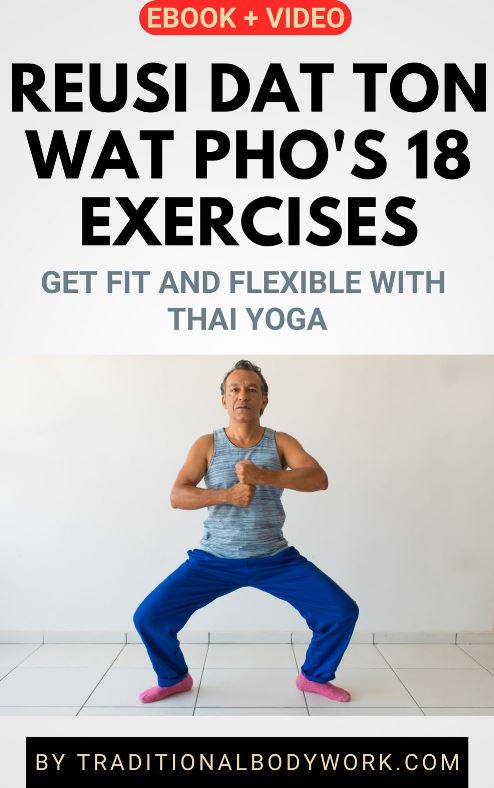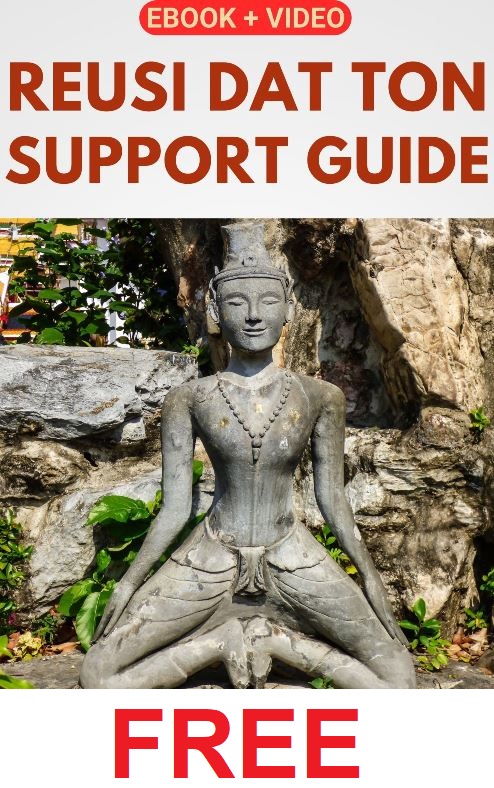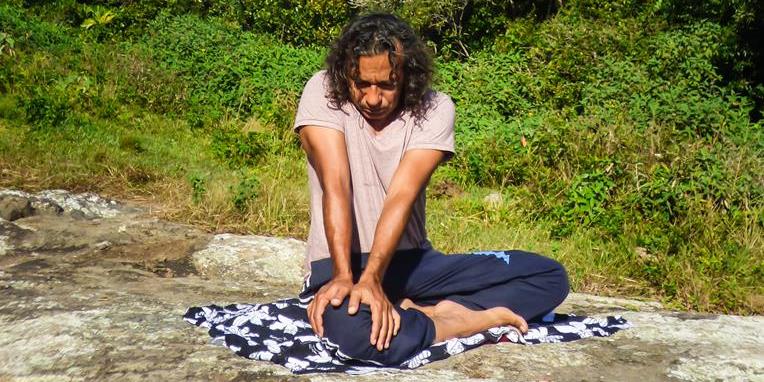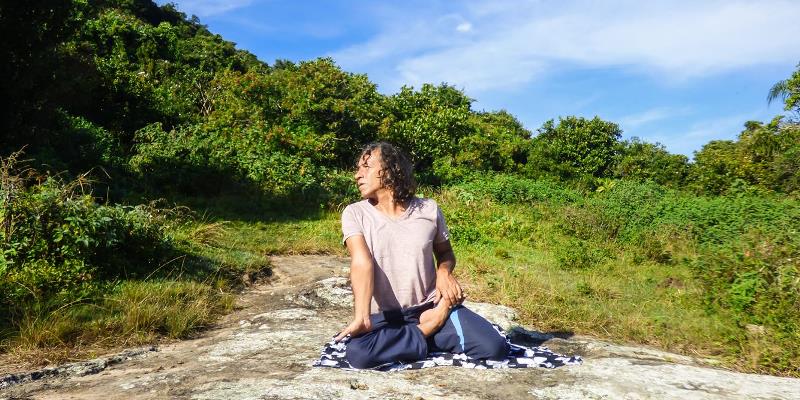
Today, it has become rather common to position Rusie Datton (i.e. Rue-Si Datton or Reusi Dat Ton) as a Thai Self-Care practice to stay fit, relieve stress and anxiety, maintain health and/or to prevent illness. As a precaution, or maybe rather as a contraindication, it’s typically mentioned that Reusi Dat Ton is not meant to cure illnesses, apart from perhaps some minor health discomforts.
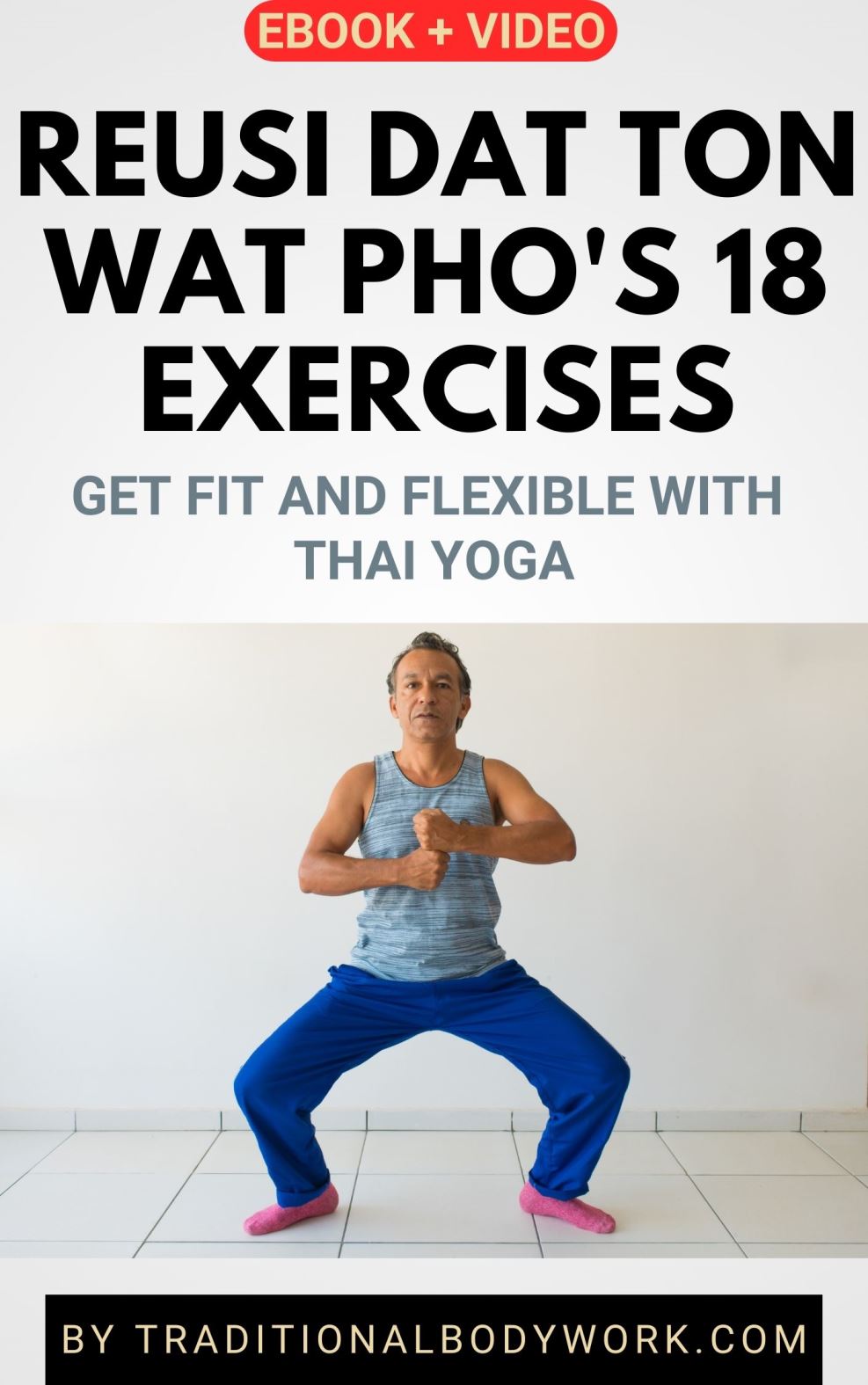
Historically however, the Rusie Datton exercises were also explicitly meant to be used as a therapeutic practice, which included treating some more serious illnesses. The famous poems and descriptions in the ancient Samut Thai Khao Reusi Dat Ton book (composed in 1838) clearly give evidence of this purpose.
Moreover, using Rusie Datton for healing purposes is certainly not obsolete. Even today, there are Thai Massage therapists who use Reusi Dat Ton alongside Thai Massage therapy. They teach clients to perform certain techniques to do at home (either by using self massage or self stretches) in order to complement the applied Thai Massage treatments and to stimulate the client’s healing process.
For Reusi Dat Ton to have a therapeutic healing effect, exercises should not only be repeated regularly, they also need to be carried out in a certain way, such as using strength while doing the exercises and/or using specific breathing techniques. Often, a substantial number of repetitions is needed (for instance, ten to fifteen times), besides doing the exercises several times per day over a longer period, perhaps several weeks. In this particular sense, Reusi Dat Ton resembles the more contemporary practice of giving clients physiotherapy exercises to do at home.
Apart from doing self-stretches and self-mobilizations, a client may also need to learn to give self-acupressure and self-massage if an exercise demands that. Sometimes the client will also need some knowledge of the trajectories of specific Sen Sip Energy Lines to be able to give acupressure on the correct body locations.




